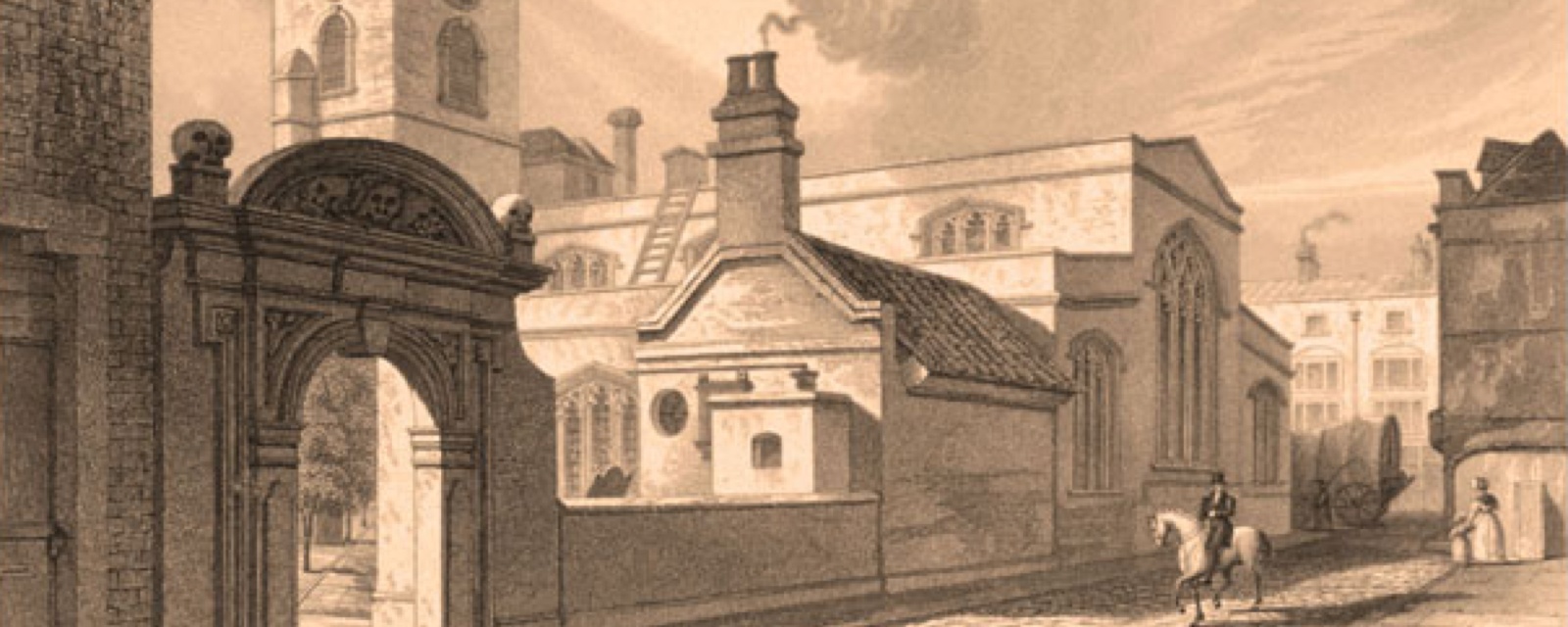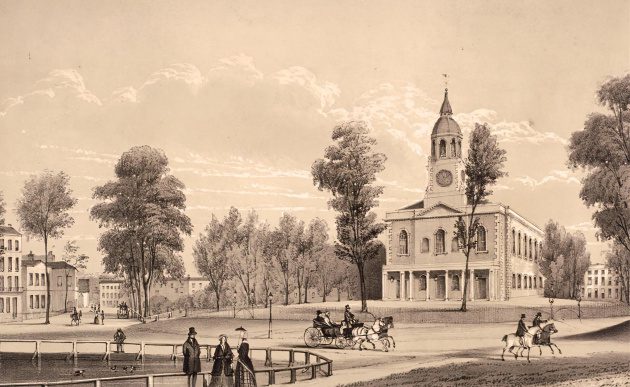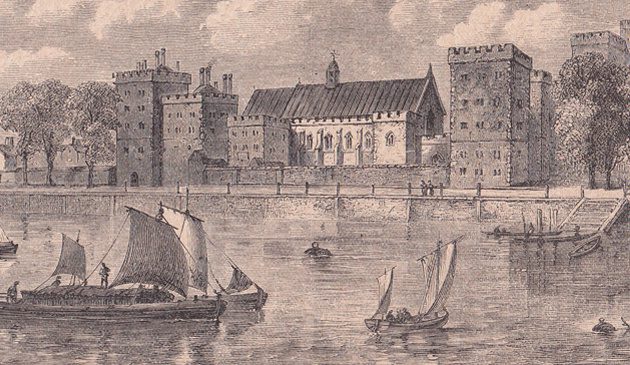St. Olave Hart Street

St. Olave Hart Street, seen from Seething Lane. Skulls and crossbones, noted by Charles Dickens, can be seen above the gate into the churchyard.
The small church of St. Olave Hart Street on the eastern side of the City of London is of Saxon origin. It is one of only eight churches in the City that remain from before the Great Fire of London but was carefully restored after much destruction during the Second World War.
The Great Fire of September 1666 raged for three days and destroyed most of the City of London. The wind was blowing from the east, so the fire spread westwards from Pudding Lane, where it had begun, destroying everything in its path. On the morning of the fourth day firefighters used explosives to clear a firebreak along Seething Lane and Mark Lane, thus saving those buildings on the very east of the City. One of those that survived was the small church of St. Olave on Hart Street. It therefore has a more ancient air about it than most others in the City and John Betjeman described St. Olave’s as “A country church in the world of Seething Lane”.
There were once six churches with the name St. Olave in the City and Southwark. Olaf Haraldson, after whom they were dedicated, was the King of Norway in the early 11th century. In 1012 Danish Vikings murdered Archbishop of Canterbury Alfege, at Greenwich and occupied London. The Anglo-Saxon King Æthelred II (Æthelred the Unready) fled to Normandy but returned to London with his ally Olaf. During the resulting siege in 1014 Olaf captured London by destroying part of London Bridge, drowning its Viking defenders, and thus giving us the rhyme London Bridge is Falling Down. The Danes also had an earthwork castle at the southern end of the bridge – the ‘south weorc’ – that was successfully stormed, and that became the location of St. Olave Southwark church. Olaf converted to Christianity in England and took his faith back to his native country.
St. Olave Southwark was demolished in 1928 to make way for the St. Olave office building, which still survives and incorporates a black and gold figure of the saint in its facia. The proceeds from the sale of that site were used to build St. Olave Mitcham church. St. Olave Broad Street only survived until about 1300 when the Austin Friars demolished it to create their monastery. St. Olave Silver Street and St. Nicholas Olave were both destroyed in the Great Fire and never rebuilt. St. Olave Jewry in the City’s medieval Jewish quarter was rebuilt by Christopher Wren after the Great Fire but demolished in 1888, leaving only a façade of the former tower, with the proceeds of the sale of the land used to build a new church in Stoke Newington.
The stone vaulted crypt of St. Olave Hart Street survives from the late 12th century, although there was probably an earlier wooden building from the Saxon period on the site. The vestry door is thought to be from the 13th century. At the very end of that century the important religious order of Crutched Friars, or Friars of the Holy Cross, was established on the corner of Hart Street and remained as a neighbour of St. Olave’s until the dissolution of the monastery by Henry VIII in 1538. In around 1450 two wealthy parishioners, Robert and Richard Cely, commissioned a rebuilding of St. Olave’s in the Perpendicular style.
St. Olave’s stands on the corner of Hart Street and Seething Lane. Another of the buildings that survived the Great Fire was the Navy Board, which was located further along Seething Lane, where Seething Lane Garden can now be found. Samuel Pepys was then employed as Clerk of the Acts at the Navy Board, for which he and his wife Elizabeth were provided an apartment in the building. They lived through the Great Plague of 1665 that preceded the Great Fire. In that year Mary Ramsey was buried in the churchyard and the legend is that it was her who brought the plague to London.
Pepys often mentioned their parish church in his diary. During church services Samuel and Elizabeth sat in the private Navy Board pew in the south gallery, which could be reached from a staircase from the churchyard specially built for Pepys. Elizabeth died in 1669 at just 29 years of age. She was buried beneath the church’s communion table and Samuel commissioned the well-known sculptor John Bushell to create a fine white marble bust in her memory that can still be seen to the left of the altar. In 1703 Samuel was buried in a vault beside Elizabeth. A memorial to Pepys was created in the 19th century that can be seen on the south wall. There is an annual Pepys Commemoration Service at the end of each May.


